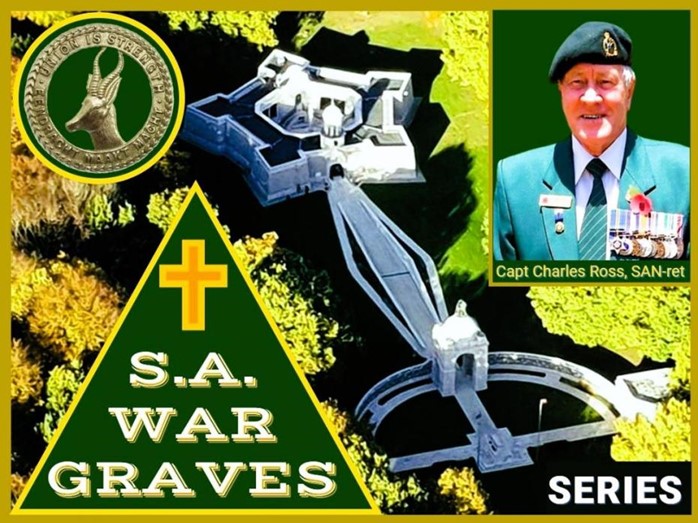
SOUTH AFRICAN COMMONWEALTH WAR CASUALTIES BURIED ACROSS THE WORLD – PART NINETY-ONE.
By Captain (SAN) Charles Ross (SA Navy Retired)
South Africans participated in almost every war theatre during the First and Second World Wars. According to the Commonwealth War Graves Commission Casualty Data Base 7 290 (includes 607 unknown) First World War casualties and 9 986 (includes 84 unknown) Second World War casualties are buried in 1 207 cemeteries. In contrast, 2 959 First World War and 2 005 Second World War casualties are commemorated on 48 memorials. This does not include the more than 2 700 South Africans not recently commemorated by the Commonwealth War Graves Commission. A new memorial, Cape Town Labour Corps has been constructed in the Gardens in Cape Town and was unveiled by HRH Princess Royal on 22 January 2025.
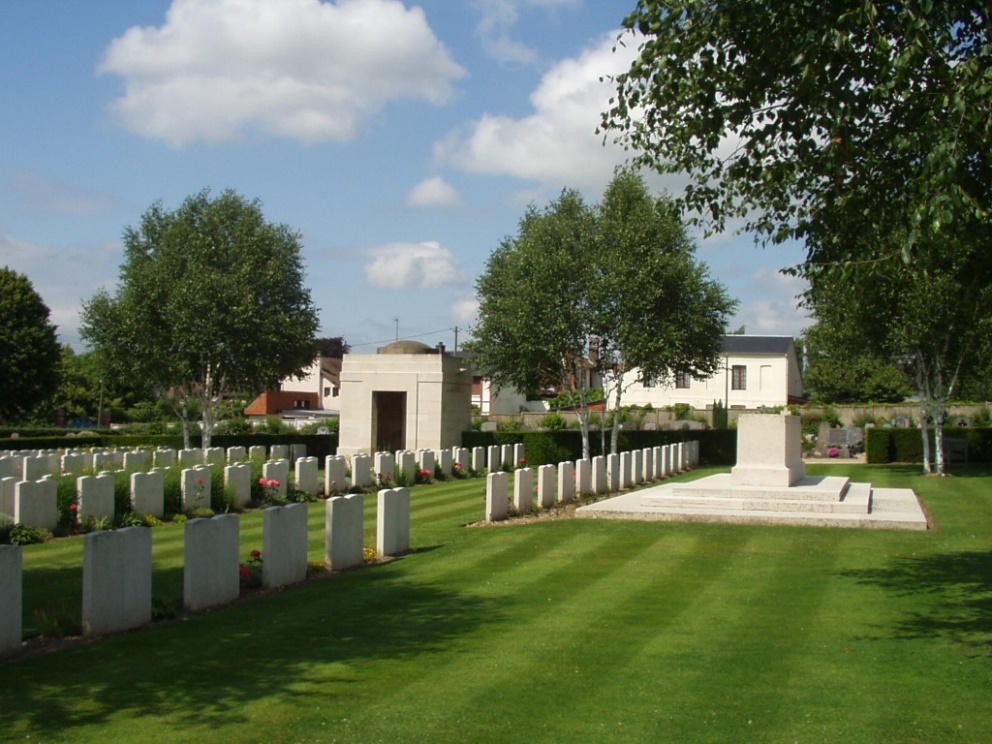 BOIS-GUILLAUME COMMUNAL CEMETERY EXTENSION – FRANCE
BOIS-GUILLAUME COMMUNAL CEMETERY EXTENSION – FRANCE
The extension adjoins Bois-Guillaume Communal Cemetery. It was begun in March 1917 and most of the burials came from No.8 General Hospital, which was quartered at Bois-Guillaume in a large country house and grounds.
There are now 360 First World War burials in the extension and one from the Second World War. The communal cemetery contains a further 320 First World War graves. Please note, a number of the graves in Rows A to G are doubles.
The cemetery extension was designed by Sir Reginald Blomfield.
One South African casualty from World War One is buried in this cemetery.
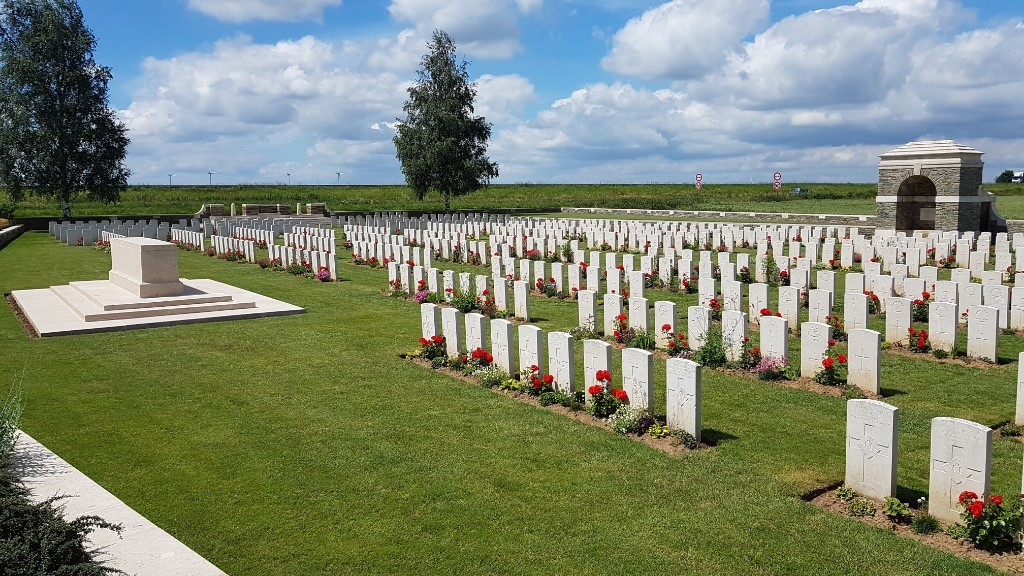 BOUCHOIR NEW BRITISH CEMETERY – FRANCE
BOUCHOIR NEW BRITISH CEMETERY – FRANCE
The village of Bouchoir passed into German hands on 27 March 1918 but was recovered by the 8th Canadian Infantry Brigade on 9 August 1918. The New British Cemetery was made after the Armistice when graves were brought there from several small Commonwealth cemeteries and from the battlefields round Bouchoir and south of the village. Almost all date from March, April or August 1918. The cemetery now contains 763 burials and commemorations of the First World War. 231 of the burials are unidentified but there are special memorials to five casualties known or believed to be buried among them. Another special memorial commemorates an airman buried in Laboissiere German Cemetery whose grave could not be found. The graves in Plots I and II are numbered consecutively from 1 to 144. Those in Plot III are numbered from 1 to 135, and the same system applies to Plot IV. Plots V and VI are numbered by rows in the usual way.
The cemetery was designed by Sir Herbert Baker.
One South African casualty from World War One is buried in this cemetery.
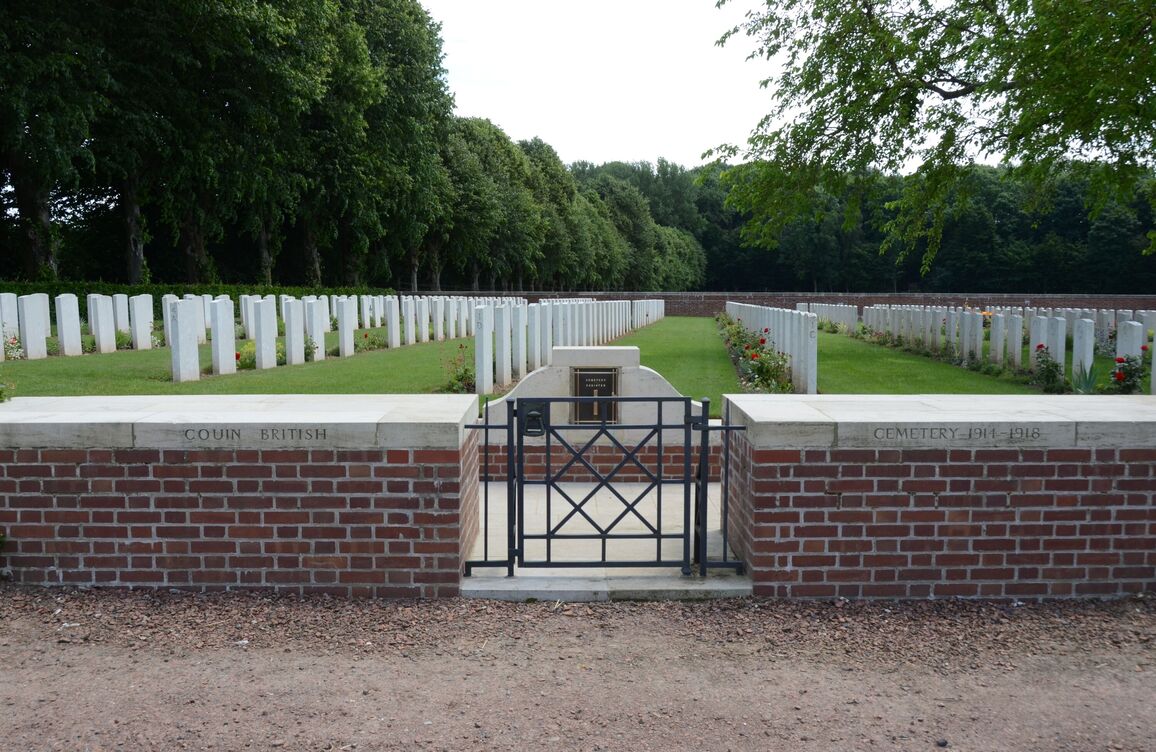 COUIN BRITISH CEMETERY – FRANCE
COUIN BRITISH CEMETERY – FRANCE
Couin Chateau was used as a divisional headquarters from 1915 to 1918. The BRITISH CEMETERY was begun in May 1916 by the field ambulances of the 48th (South Midland) Division and was used by units and field ambulances during the Battle of the Somme in 1916. It was closed at the end of January 1917 because further extension was not possible and now contains 401 Commonwealth burials of the First World War and three German graves. The NEW BRITISH CEMETERY was opened across the road and was used by field ambulances from January 1917 (with a long interval in 1917-18) to the end of the war. One grave was moved there after the Armistice from a cemetery at Coigneux. It now contains 360 Commonwealth burials of the First World War and two German war graves.
Both cemeteries were designed by Sir Reginald Blomfield.
One South African casualty from World War One is buried in this cemetery.
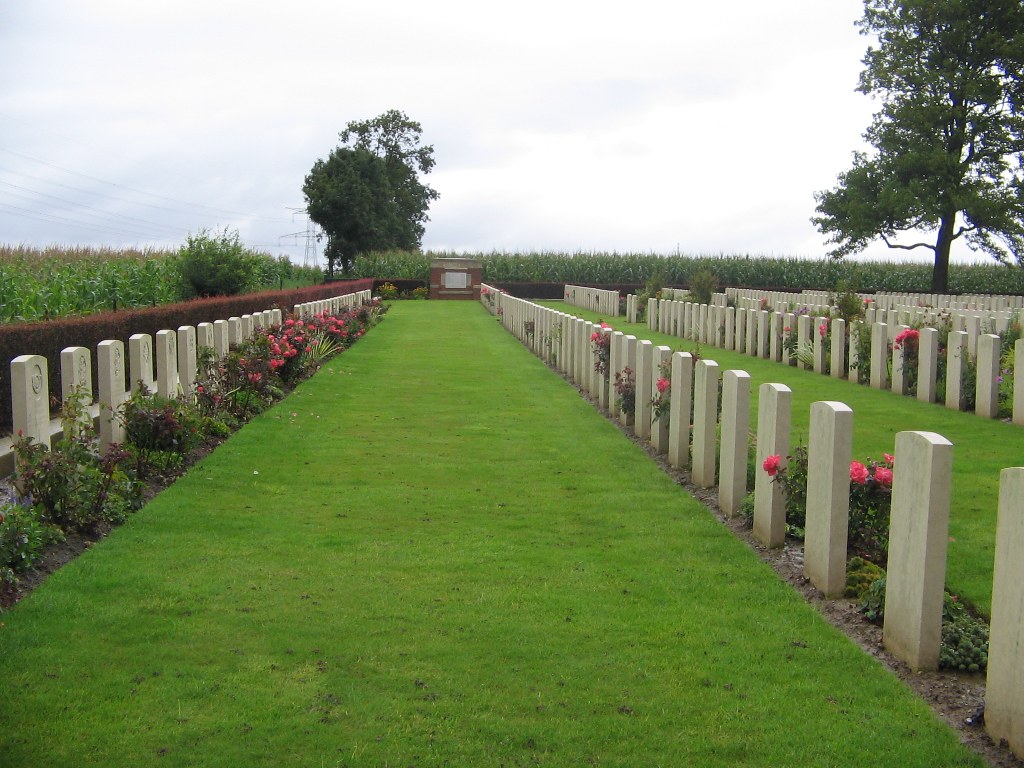 VARENNES MILITARY CEMETERY – FRANCE
VARENNES MILITARY CEMETERY – FRANCE
The cemetery was laid out by the 39th Casualty Clearing Station in August 1916, during the Battle of the Somme, but the first burials were made during August and September by more mobile divisional Field Ambulances. The 4th and 11th Casualty Clearing Stations then used the cemetery from October 1916, joined by the 47th from December 1916, but by May 1917 Varennes was deserted and remained so until the Germans launched their offensive in this quarter in April 1918. The cemetery was then extended by the 17th and 38th (Welsh) Divisions by the addition of plots II and III, and at the beginning of September 1918, the 3rd Canadian and 59th Casualty Clearing Stations arrived at Varennes. The cemetery contains 1,219 burials of the First World War, two of which were brought in from Varennes Communal Cemetery in 1934.
The cemetery was designed by Sir Reginald Blomfield.
Four South African casualties from World War One are buried in this cemetery.
